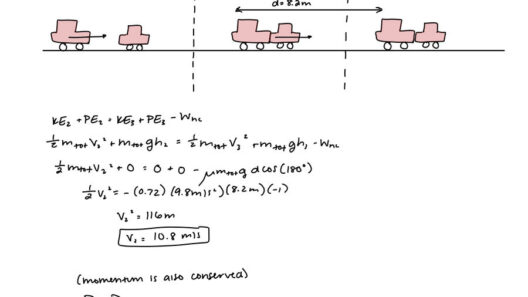In the realm of physics, particularly in the study of mechanics, the concept of energy conservation plays a pivotal role. When delving into the mechanics of rotational systems, one may ponder: Is energy conserved in a frictionless rotational system? This inquiry necessitates an exploration of various principles associated with energy, types of energy, and the characteristics of systems devoid of friction.
Energy conservation is a fundamental principle stating that within an isolated system, the total energy remains constant over time. This principle can be dissected into several forms, including kinetic energy, potential energy, and mechanical energy. In a frictionless environment, these energies can interchange through various processes without loss due to frictional forces.
Kinetic energy, defined by the equation ( KE = frac{1}{2} mv^2 ), represents the energy of an object in motion. In a rotational system, however, this concept takes on a different form. The kinetic energy of a rotating body can be expressed as ( KE_{rot} = frac{1}{2} I omega^2 ), where ( I ) is the moment of inertia and ( omega ) is the angular velocity. The ability of these variables to interchange is crucial for understanding energy conservation in rotational dynamics.
Potential energy, particularly gravitational potential energy, also plays a vital role in energy conservation principles. For an object at height ( h ), the potential energy is given by ( PE = mgh ). In a rotational system, as an object rotates, its elevation changes, subsequently altering its gravitational potential energy. In a frictionless environment, the conversion between kinetic and potential energy will occur seamlessly as the object traverses its path.
Mechanical energy, a composite form of energy combining both kinetic and potential energies, remains a focus of analysis. In a frictionless system, the total mechanical energy can be expressed as sum ( E_{mech} = KE + PE ). Understanding this relationship is imperative to answer the core question: How does energy behave in a frictionless rotational system?
To elucidate the phenomena occurring in a frictionless rotational system, let us consider an exemplary scenario: a pendulum. When a pendulum swings, it transforms potential energy into kinetic energy as it descends, reaching maximum speed at the lowest point of its arc. Conversely, as it ascends, kinetic energy is converted back into potential energy. In the absence of friction, the total mechanical energy of the pendulum remains conserved throughout its oscillation.
However, the discussion surrounding energy conservation in rotational systems does not hinge solely on pendular motion. Various sophisticated systems further delineate these principles. Consider, for instance, a frictionless merry-go-round. As individuals exert force to spin the platform, they create angular momentum. In this scenario, angular momentum, akin to energy, remains conserved if no external torques act upon the system. The relationship between angular momentum and rotational kinetic energy is expressed as ( L = I omega ), where ( L ) represents angular momentum.
Exploration of other cases, such as a rotating disk or a flywheel, emphasizes similar conservation principles. As a rotational force is applied, work is undertaken on the system, translating into increased kinetic energy. Upon reaching a steady state where forces are balanced, energy within the system continues to oscillate but maintains a consistent total value. Such behaviors affirm the underlying theory that energy is conserved, specifically in frictionless rotational systems.
The conservation of energy is manifested through additional factors, such as inertia and torque. In a frictionless environment, these components operate independently of extraneous variables, allowing for a clearer interpretation of the energy transformations at play. Torque, given by the equation ( tau = I alpha ), where ( tau ) is torque and ( alpha ) is angular acceleration, acts as a driving force in effecting energy changes within the system.
Moreover, real-world applications of these principles highlight their significance. In designing efficient rotational machinery, engines, and other mechanical systems, engineers often strive to minimize frictional losses. Understanding how to maintain energy conservation in these settings can lead to enhanced operational efficiency and reduced energy consumption. This underscores the relevance of the concepts discussed, showcasing their practicality beyond theoretical frameworks.
Nevertheless, one must recognize that real-world systems are seldom devoid of friction. Factors such as air resistance, material wear, and energy dissipation must be accounted for when evaluating energy conservation. To appropriately assess energy efficiency in practical applications, engineers often employ model systems that approximate frictionless conditions. This approach facilitates clearer understanding while retaining the complexity of real-world dynamics.
In conclusion, energy is indeed conserved in a frictionless rotational system. The interplay of potential and kinetic energy fortifies this assertion. Systems such as pendulums, merry-go-rounds, and flywheels exemplify the fundamental principles of energy conservation, facilitating an understanding that extends across various mechanical phenomena. As society increasingly prioritizes energy efficiency and sustainability, comprehending these principles remains imperative for advancing technology in harmony with ecological balance.








